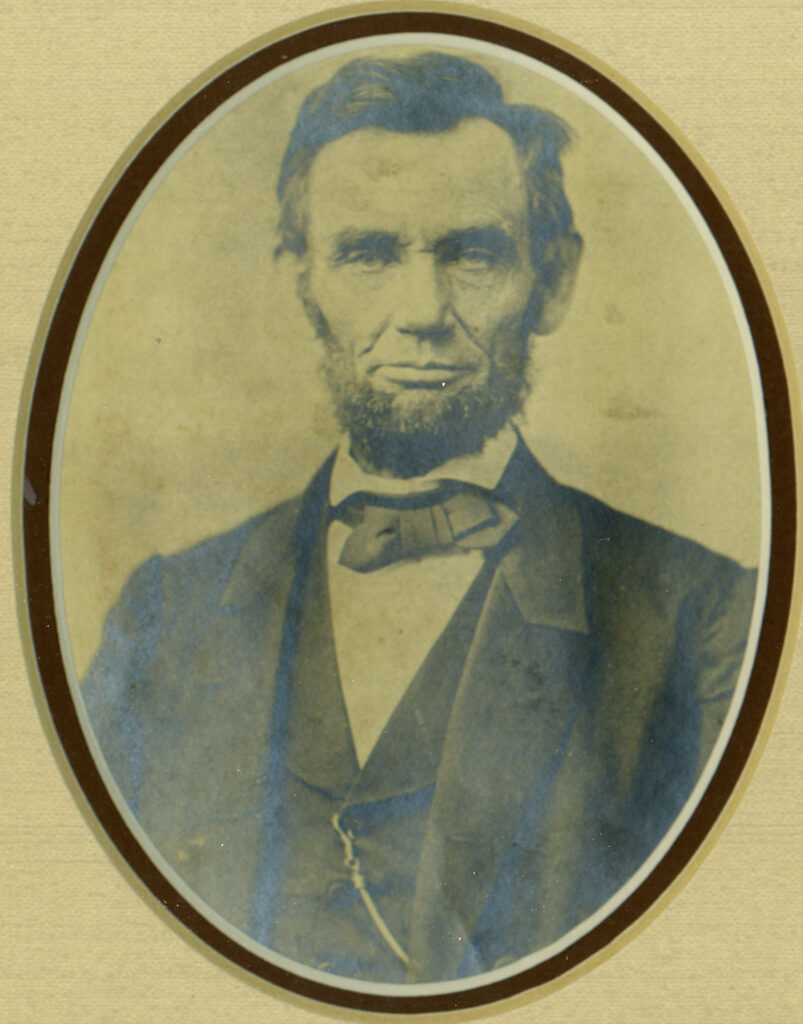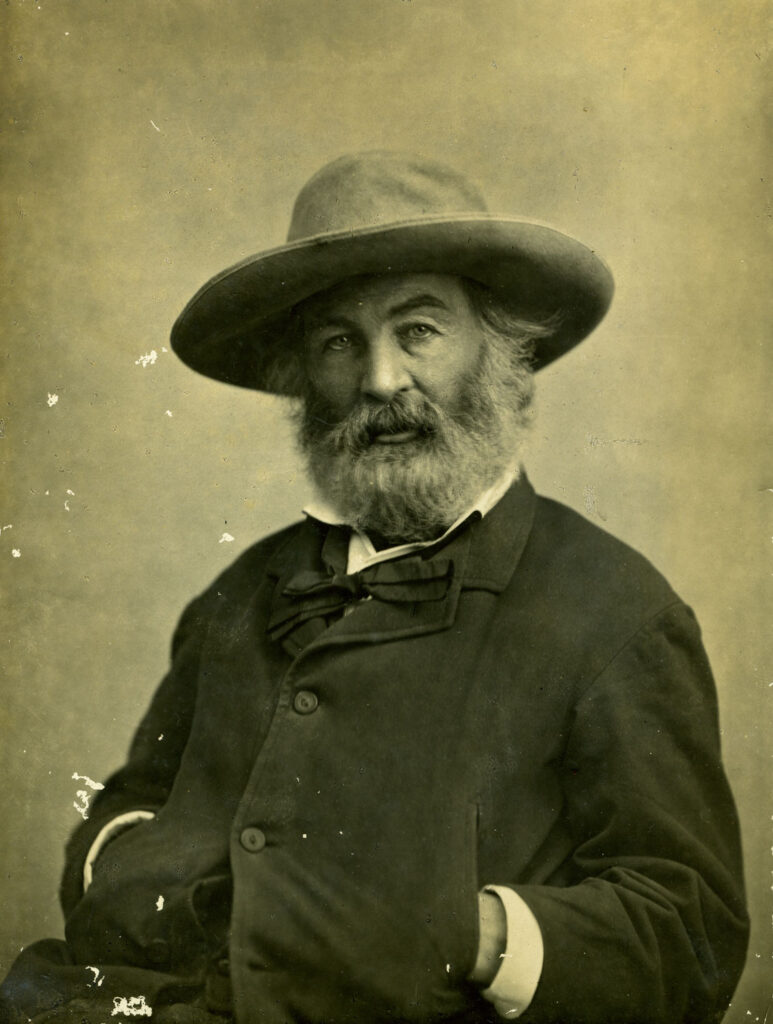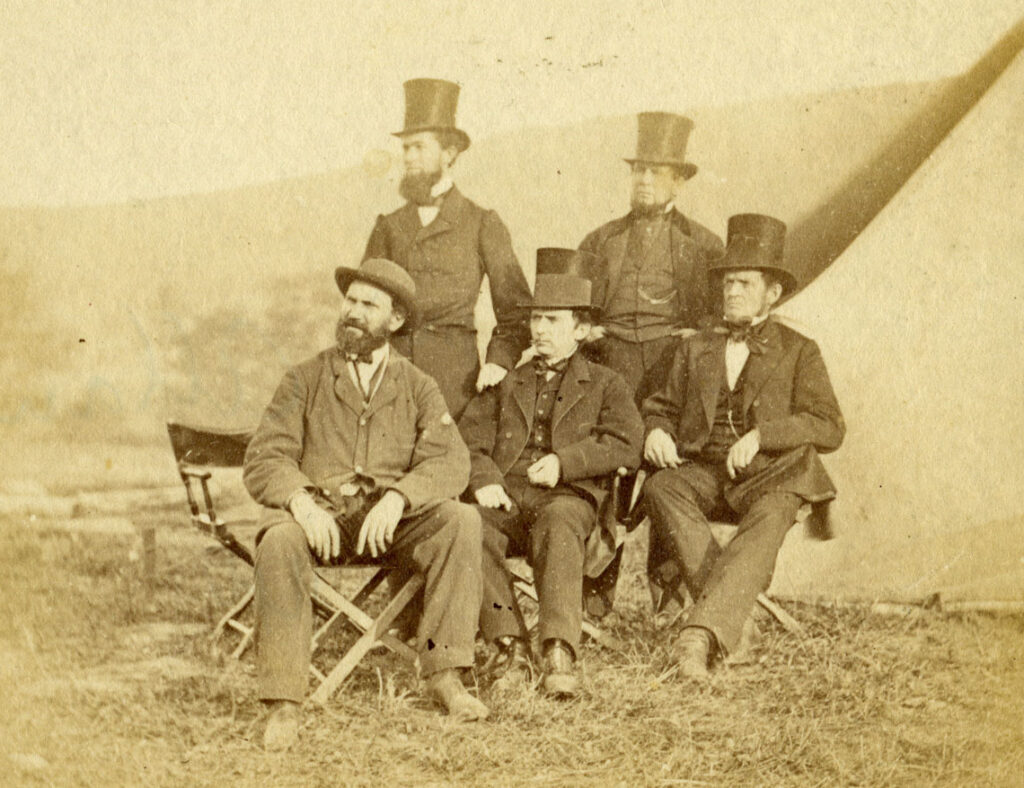Section #22 - The Southern States secede and the attack on Ft. Sumter signals the start of the Civil War
Chapter 277: Lincoln Delivers Confusing Messages On Route To Washington
February 11, 1861
The New President Heads To Washington For The Inauguration

As Jefferson Davis assumes office, Abraham Lincoln prepares to do the same.
Before leaving Illinois for Washington, he has two farewells to deliver. One is for his 72 year old step-mother, Sarah (Sally) Lincoln, living in Charleston, Illinois. He visits her on January 30 and tries to soothe her fear after she warns they will never meet because his enemies will kill him first.
Back home on February 6, he holds a reception for his Springfield neighbors, and on February 11 he says good-by to them before boarding a train with Mary heading east.
To this place and the kindness of the people, I owe everything. Here I have lived for a quarter of a century, and have passed from a young man to an old man. Here my children have been born, and one is buried. I now leave, not knowing when, or whether ever, I may return, with a task before me greater than that which rested upon Washington. Trusting in Him, who can go with me…I bid you an affectionate farewell.
With that he begins a grueling twelve-day journey to Washington, DC, which will include a total of 84 different stop-overs.
Lincoln’s Twelve Day Whistle Stop Journey To Washington
| Feb. | Starts In | Ends In | # Stops |
| 11 | Springfield. IL | Indianapolis, IN | 9 |
| 12 | Indianapolis | Cincinnati, OH | 5 |
| 13 | Cincinnati | Columbus, OH | 8 |
| 14 | Columbus | Pittsburg, Pa. | 12 |
| 15 | Pittsburg | Cleveland, OH | 6 |
| 16 | Cleveland | Buffalo, NY | 13 |
| 17 | Day of rest | Buffalo, NY | — |
| 18 | Buffalo | Albany, NY | 10 |
| 19 | Albany | New York City, NY | 8 |
| 20 | Stays put | New York City, NY | — |
| 21 | New York City | Philadelphia, Pa | 9 |
| 22 | Philadelphia | Philadelphia, Pa | 3 |
| 23 | Philadelphia | Washington, DC | 1 |
Before he heads out he learns some hopeful and some ominous news.
On February 9, the state of Tennessee votes against holding a secession convention – and they will be joined nine days later by Maryland and Arkansas. Perhaps the Upper South will stay in after all.
But then comes word via Henry Seward’s son, Fred, that a plot to assassinate the President has been discovered in Baltimore, which is to be his last scheduled stop before arriving in DC. Detective Alan Pinkerton confirms the same news, and, along with Ward Lamon, Lincoln’s bodyguard, a plan for a safe passage through Maryland begins to take shape.
February 11-23, 1861
Lincoln’s Messages Along The Way Are Variable
Once under way, both the nation and the press are eager to hear what the new President will do once he takes office. The focus of their questions shift away from what they know he intends to do – stop the spread of slavery – to what remains uncertain, how he will deal with the seceding states.
Is he really willing to plunge the nation into a civil war to prevent more black slaves from residing in the west? This is what men like John Crittenden and Thomas Corwin are confronting in Congress. So what will he do once in the White House?
At his first stop in Indianapolis, he is met by Republican Governor Oliver Morton and a 34 gun salute. His promise to hold Sumter and take back the other Charleston forts draws cheers from a crowd estimated at 20,000.
In Cincinnati, he speaks to the German Industrial Association and urges them to support the Union.
A massive turn-out of perhaps 60,000 line his route through Columbus, Ohio on February 13. But many are puzzled by his words.
When we look out, there is nothing that really hurts anybody…As I traveled in the rain through your crowded streets, I (thought)… the Union can be in no danger…and will be preserved.
As with Seward’s recent comments, the apparent naiveté is striking.
It is as if Lincoln fails to understand the devastating impact his refusal to expand slavery will have on the one-dimensional economy of the South. Without slavery in the west, there will be no new plantations to grow cotton and no new owners eager to buy excess field hands bred in the east.
Two days later, in Cleveland, he repeats these same misinformed sentiments:
The crisis, as it is called, is altogether artificial…It has no foundation in facts….Let it alone and it will go down of itself.
Arriving in Buffalo on February 16, he is greeted by ex-President Millard Fillmore and enjoys his first real rest stop. On Sunday the 17th he accompanies Fillmore to a nearby Unitarian Church. He is joined by newspaperman Horace Greeley on his departure to New York.
On February 19 at Dunkirk, New York, Lincoln grasps a flagstaff and asks the crowd for support him in whatever struggles lie ahead.
Standing as I do, with my hand upon this staff, and under the folds of the American flag, I ask you to stand by me as long as I stand by it.
In New York City some 250,000 people line his procession route to the Astor House, where he stays over-night before meeting with another influential editor, William Cullen Bryant.
February 20 finds him addressing a large crowd in the city, again not talking about slavery, but about saving the Union.
There is nothing that can ever bring me willingly to consent to the destruction of the Union.
The next night he is in Philadelphia, and listening to detective Pinkerton and Ward Lamon describe their scheme to slip through the presumed assassins in Baltimore.
February 19, 1861
Sidebar: The Poet Walt Whitman Recalls Seeing Lincoln For The First Time

The sighting occurs as the President-elect arrives in New York City on February 19, 1861.
I shall not easily forget the first time I ever saw Abraham Lincoln… From the top of an omnibus (driven up on side, close by, and blocked by the curbstone and the crowds) I had, I say, a capital view of it all and especially of Mr. Lincoln: his looks and gait; his perfect composure and coolness; his unusual and uncouth height; his dress of complete black, stovepipe hat pushed back on his head; dark-brown complexion; seamed and wrinkled yet canny-looking face; black, bush head of hair; disproportionately long neck; and his hands held behind, as he stood observing the people.”
Walt Whitman
February 23, 1861
Lincoln Slips Into Washington Unscathed But Mocked

Lincoln’s final move in his journey to DC proves effective although personally embarrassing.
On February 22, he travels to the Pennsylvania state capital of Harrisburg, meets with Republican Governor Andrew Curtin, and addresses the state legislature before retiring to his hotel.
Once there, he exchanges his familiar stovetop hat and overcoat for a brown felt cap and a different cloak, and slips back to the train station for a secret return trip to Philadelphia. Before leaving, Pinkerton cuts the telegraph lines in Harrisburg to conceal his departure.
In Philadelphia he boards an overnight sleeper on the Wilmington & Baltimore line headed to Washington. Pinkerton offers Lincoln a revolver and a Bowie knife for the trip, but the President-elect declines.
At 3:30am, the train pulls into Baltimore, where Lincoln’s car is switched by horses to the B&O line depot for a 4:15am departure to DC. All of this proceeds without incident, and Lincoln is met in the capital at 6:15am on February 23 by his Illinois friend, Elihu Washburne, who accompanies him to the Willard Hotel.
The ruse becomes apparent as the train from Philadelphia arrives that same day in Baltimore around 11:30am, with the Mayor waiting to greet the Lincolns. When the assembled crowd learns that only Mary Lincoln and her three sons are on board, many react with “oaths, obscenities…and disgusting gesticulations” according to observers.
Once the scheme becomes clear to the press, they respond with cartoons showing a fearful new President sneaking into Washington in a disguise “like a thief in the night.”
This is hardly the first impression the new President was hoping to make.